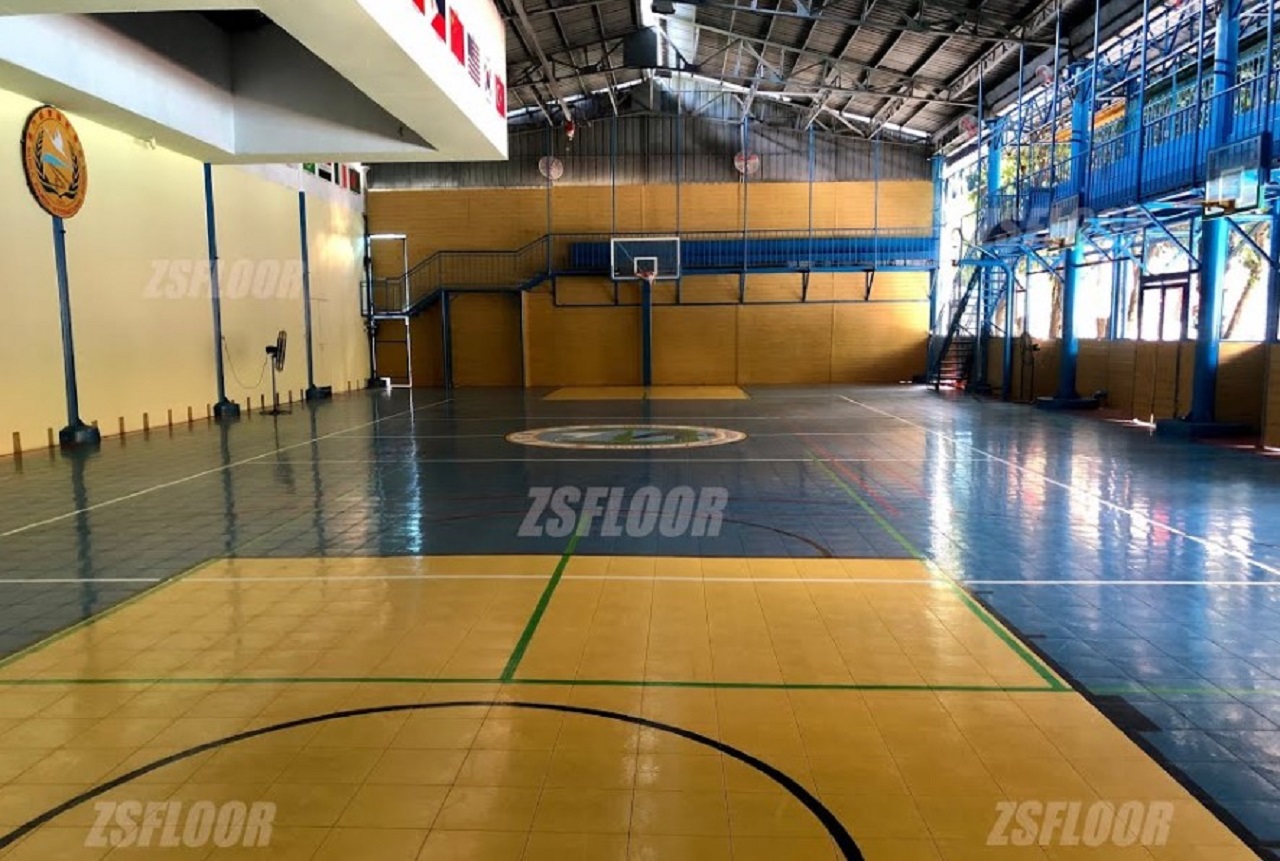A great basketball floor is way more than a surface on which one plays. It's the base where every game, shot, and move happens. High-quality courts command features that include shock absorption, traction, and durability. This kind of flooring allows the player to exert their best skills with outstanding comfort and safety. The characteristics of the flooring do have to meet certain standards to bear the fast pace of the game along with the continuous shifts of the players.
A secret to a high-performance court is choosing a FIBA approved basketball floor. This means the floor is up to the global standards for professional play, providing the right bounciness and grip necessary in competitive games. A basketball floor can make a difference in the game experience. It enables athletes to reach their full potential if it possesses all the correct features.
Essential Qualities of a High-Quality Basketball Floor
A good basketball floor gives much more in terms of aesthetics but rather contributes highly to performance and safety for the players. Some key features that distinguish a superior court include shock absorption, traction, and durability, which offer players the chance to achieve performance at the maximum.
Shock Absorption
It might be considered one of the most critical features of the basketball floor, as it reduces the impact on players' joints and muscles. When players make jumps, they run and land on the court; shock-absorbing materials cushion these movements. It prevents the stress on their bodies.
Good shock absorption reduces injury risks and allows athletes to train longer and play with less feeling of fatigue. A well-performing floor in terms of shock absorption supports the physiological demands of the game. It keeps the players safe and comfortable.
Traction and Grip
These provide the players with the ability to quickly change movement, stop suddenly, and make sharp turns without slipping. Good traction allows players to be in control of their movements for good footwork and agility on the court. A floor that provides high traction minimizes falls and injuries by offering the athletes a stable and safe playing surface on which to maintain their focus on the game.
Consistent Bounce
Bounces must also be uniform across the court since this will affect the percentage of dribbling accuracy and shooting consistency. In different locations, if it bounces differently, this can create uneven tempo and uneven play in a game.
Uniform bounce ensures that players can anticipate how the ball will behave, which is critical to precision and fair competition. This consistency makes the court reliable for all players, regardless of where they are positioned.
Durability and Maintenance
They are of equal importance on any basketball floor since courts see heavy usage and must support frequent wear and tear. A resilient floor will last longer and be of higher quality over time, even at heavy usage. It makes them cost-effective in the long run. Also, a floor that is easy to clean and maintain looks new, works well, requires fewer repairs, and therefore lasts longer.
Aesthetic Appeal
This adds to the overall experience; the nice-looking court is in a professional and inviting setting. A nicely designed floor can lift morale and enhance the visual branding of the facility through options for logos, color schemes, and other custom designs. Aesthetic appeal reflects not only the identity of the team or place but also makes the court a more enjoyable place from both a player's and spectator's perspective.
Types of Basketball Floor Materials
Several materials are used for basketball courts, each with pros and cons. Understanding the different options helps in choosing a surface that best meets the needs of players and the environment.
Hardwood (Maple)
It is a traditional option for indoor basketball courts and an extremely popular choice due to its resilience and very good performance. Maple floors ensure consistent bounce and a smooth, polished surface, making it very suitable for professional play. The aesthetics of hardwood make the court look beautiful since its classic appearance means high quality. Nevertheless, this kind of flooring requires regular maintenance to maintain its quality, which is quite costly.
Synthetic Flooring
It is a very good alternative to multi-purpose gyms where different sports are being held. Synthetic floors are tough and require less maintenance. They tend to be cheaper than hardwood. They offer good shock absorption and traction, hence adequate for recreational play. Such types of flooring are very popular in schools and community centers where the budget and multi-purpose usage levels are higher.
Asphalt, rubber, and concrete are popular for building outdoor courts because of the resistance of these resources to weather conditions. Asphalt and concrete provide a hard surface that withstands the harsh weather outdoors but lack the shock absorption capabilities found in indoor materials. Rubber tiles are superior in terms of shock absorption compared to these types and also resist weather and heavy usage.
Conclusion
A good basketball floor combines several key factors: shock absorption, traction, consistent bounce, durability, and aesthetic appeal. This will go a long way in improving players' performance and safety. Different materials, such as hardwood, synthetic flooring, and outdoor options, bring various benefits based on the location and purpose of a court.
A FIBA certified basketball floor ensures that your court is to high standards for the best of the players. By investing in a first-class basketball floor, venues can provide an arena that enhances the game, protects the players, and maintains its professionalism.


